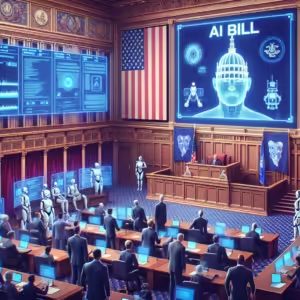H1: The Growing Role of AI in Education
Artificial Intelligence (AI) is revolutionizing various industries, and education is no exception. With the increasing integration of AI-driven teaching tools in classrooms, there’s a pressing need to ensure that these tools are as trustworthy as human educators. The benefits are clear: AI can personalize learning experiences, provide instant feedback, and help educators manage administrative tasks. However, the deployment of AI in education comes with its own set of challenges that necessitate careful consideration.
H2: The Promise of AI in Transforming Education
AI in education is designed to assist both educators and students. Here are some of the key advantages:
– **Personalized Learning:** AI can tailor educational content to individual learning styles and paces, ensuring students grasp concepts effectively.
– **Automated Grading and Feedback:** By handling repetitive tasks, these systems free up teachers to focus more on delivering quality education.
– **Data-Driven Insights:** AI analyzes vast amounts of data to help educators identify learning gaps and adjust teaching strategies accordingly.
H2: Challenges in Trusting AI-Driven Teaching Tools
Despite these benefits, there are pressing issues that must be addressed to fully embrace AI in education:
H3: Lack of Transparency
A primary concern is the lack of transparency in how AI algorithms make decisions. These systems often operate as “black boxes,” making it difficult to understand how they reach certain conclusions.
– **Trustworthy Explanation:** Educators and students need clear explanations about how AI tools work to trust them fully.
– **Algorithm Bias:** AI systems can unintentionally perpetuate biases present in their training data, leading to unfair treatment of students.
H3: Data Privacy Concerns
AI systems depend heavily on data to deliver personalized experiences, raising significant privacy issues:
– **Sensitive Information:** AI tools access sensitive student data, making it crucial to enforce strict data protection measures.
– **Informed Consent:** Students and parents must be informed about what data is collected and how it will be used.
H3: Dependence on Technology
Over-reliance on AI in classrooms could lead to potential downsides:
– **Reduced Human Interaction:** Over-dependence on technology might reduce face-to-face interaction, which is crucial for social learning.
– **Technical Challenges:** Not all educational institutions have the infrastructure to support advanced AI tools, potentially widening educational disparities.
H2: Building Trustworthy AI Systems
To maximize the benefits of AI in education, it’s essential to build systems that are both effective and trustworthy. Here are key strategies:
H3: Ensuring Algorithm Transparency
Transparency is crucial in fostering trust in AI systems. Developers should work towards creating algorithms that:
– **Provide Clear Explanations:** AI tools should clearly explain their decision-making processes.
– **Address Bias:** Continual assessment and updating of AI algorithms are necessary to identify and mitigate biases.
H3: Prioritizing Data Security
Maintaining the confidentiality and integrity of student data is non-negotiable:
– **Robust Security Measures:** Data encryption, anonymization, and access controls are vital for protecting sensitive information.
– **Clear Privacy Policies:** Educational authorities must establish transparent privacy agreements explaining what data is being collected and how it will be used.
H3: Balancing Technology with Human Expertise
AI is not a replacement for educators but a tool that complements their work:
– **Preserving Human Interaction:** Teachers should continue to play a pivotal role in education, using AI tools to enhance — not replace — their efforts.
– **Professional Development:** Continuous training for educators on how to effectively integrate AI into their teaching methods is crucial.
H2: The Role of Educators and Policymakers
The responsibility of ensuring trustworthy AI in education lies not just with developers but also with educators and policymakers:
H3: Educator Involvement
Teachers are central to implementing AI technology effectively:
– **Feedback Loop:** Educators should be actively involved in the development and refinement of AI tools, providing valuable feedback.
– **Adaptation and Training:** Ongoing professional development helps teachers seamlessly integrate AI technologies into their classrooms.
H3: Policy Frameworks
Regulatory frameworks are necessary to guide the ethical use of AI in education:
– **Setting Standards:** Policymakers must establish clear guidelines for AI application, prioritizing student welfare and maintaining educational equity.
– **Monitoring and Evaluation:** Regular assessment of AI tools ensures they meet educational standards and ethical benchmarks.
H1: Conclusion
AI-driven teaching tools hold immense potential to transform education, making learning more personalized, efficient, and data-driven. However, these benefits will only be realized if the systems are as trustworthy as the teachers they aim to support. Building AI systems with transparency, prioritizing data security, and maintaining a balance between technology and human expertise are vital steps in this direction. Involving educators and establishing strong policy frameworks further ensures that AI in education serves its purpose effectively and equitably. As we embrace this technological evolution, trust will remain the cornerstone of success in AI-powered education.








